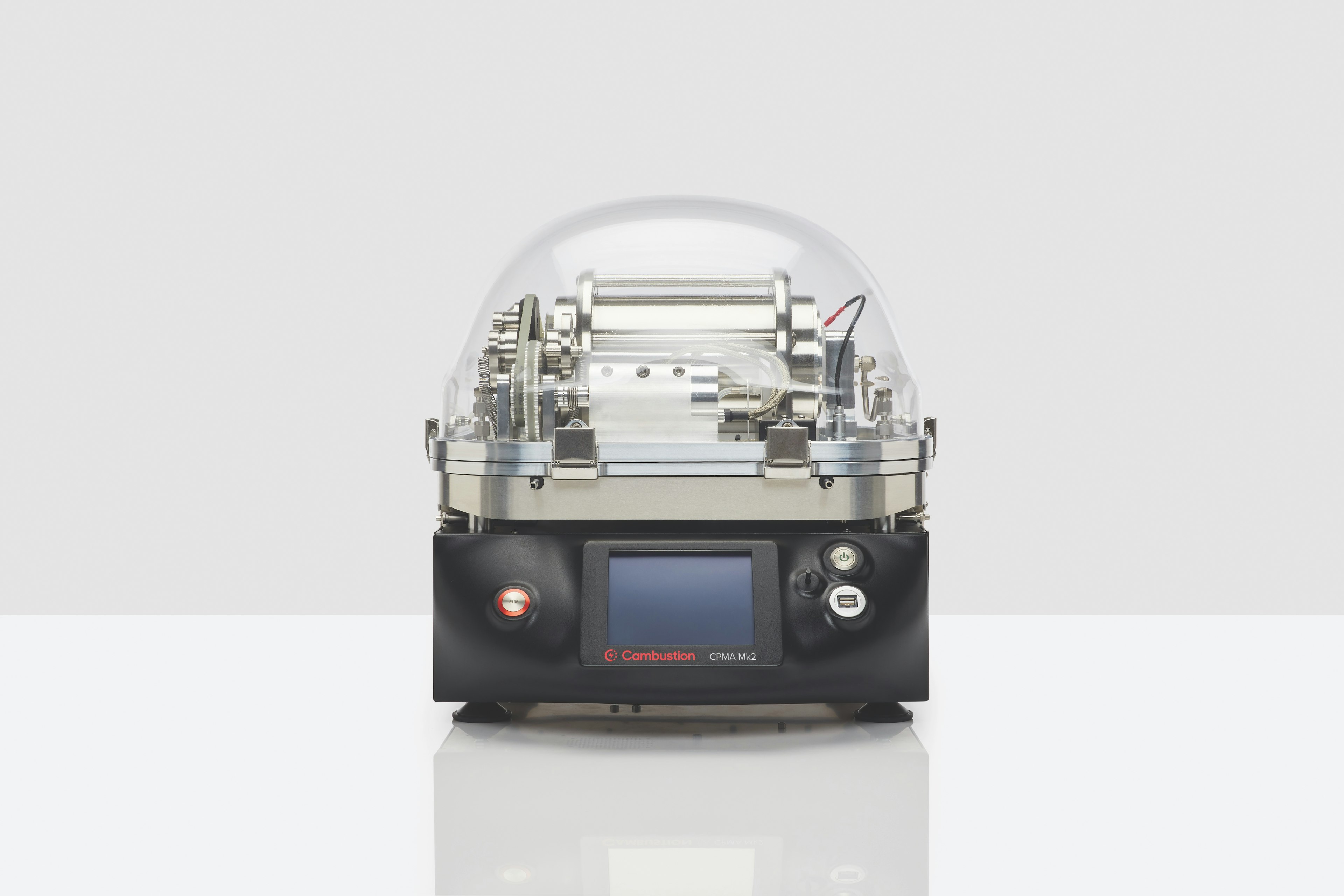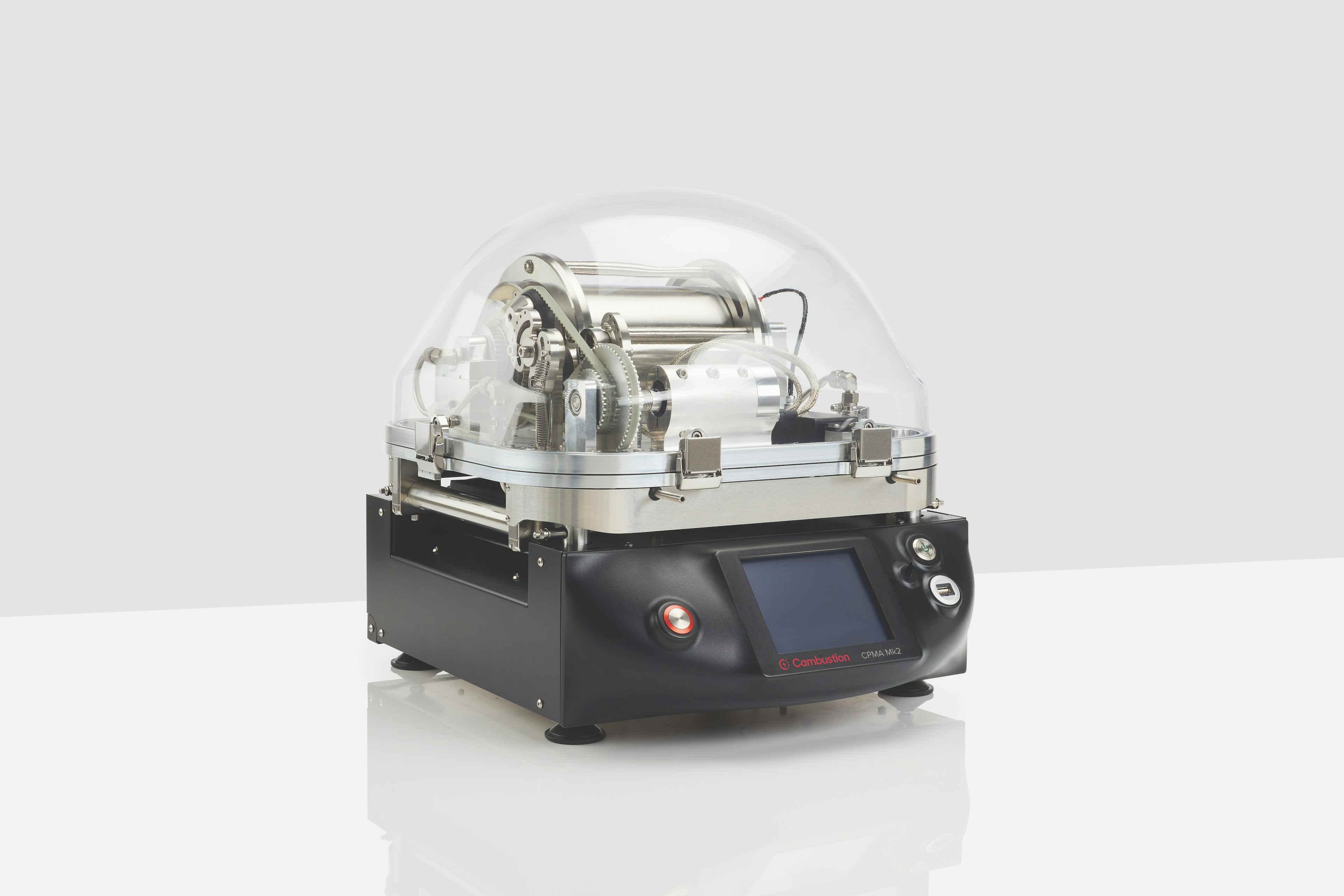CPMA | Centrifugal Particle Mass Analyzer
Re-engineered for 2020
Adopted around the world since 2012, The Centrifugal Particle Mass Analyzer (CPMA) allows direct classification of aerosol by mass:charge ratio, with an unrivalled transfer function.
It has been re-engineered for 2020 as the Mk2 version.
The CPMA uses opposing electrical and centrifugal fields to classify particles, with the ability to vary the electrical field and rotation speed to select different particle masses.
Unique features of the CPMA (see the animation for details) allow a very high transmission efficiency of aerosol particles with the selected mass, making the CPMA attractive for a range of applications.
With a touchscreen display and a variety of interfacing options, the CPMA is self contained, with no setup required- only electrical power needs to be connected before the CPMA can be run. The CPMA can record data to a USB drive, and supports analog and digital interfacing with a variety of CPCs, electrometers and other devices.
The CPMA classifier can easily be dissembled for cleaning by the user, the whole process taking less than 1 hour. All necessary tools are included. This makes the CPMA well suited to high concentration / longer duration experiments, and field or laboratory studies.
The CPMA uses standard sealed bearings, for maintenance free operation.
Traditional Aerosol Mass Measurement
Historically the Differential Mobility Analyzer (DMA) has been used to classify nanoparticles by electrical mobility. This technique has become an internationally accepted standard for ultrafine particle size measurement.
The classification in a DMA depends on the ratio between electrical charge and aerodynamic drag on each particle. Since both of these parameters depend on particle morphology, techniques to calculate ultrafine aerosol mass using DMA measurements have required empirical factors to account for varying particle morphology.
Direct Nanoparticle Mass Measurement
The difficulties associated with morphology and electrical mobility measurement are overcome by techniques which classify based upon aerosol mass directly. A technique which does this by balancing the electrostatic and centrifugal forces on a particle was first described by Ehara et al. in 1996. The APM-3600 and APM-3601 Aerosol Particle Mass Analyzers from Kanomax use these techniques.
Applications of the CPMA
Aerosol mass determination for basic research
Determination of particle "fractal dimension," in conjunction with a DMA
Fundamental aerosol mass calibration standard - measurement of suspended particle mass
An alternative to a DMA for producing a monodisperse aerosol
Determination of the mixing state of atmospheric black carbon (important for climate change modelling)
Calibration of other aerosol instruments- e.g. Droplet Measurement Technologies' Single Particle Soot Photometer (SP2)
Need more information? Connect to an expert
CPMA Brochure
For more information or a list of publications relating to the CPMA, download a brochure. Please contact Cambustion for further information and prices.
Key Application Notes
| Title | Data Type | Download File | Size | Last Updated | |||||
|---|---|---|---|---|---|---|---|---|---|
| Title | Use of the Cambustion CPMA for absolute mass calibration of the Single Particle Soot Photometer (SP2) | Data Type | Application note | Download File | cpma04v02-mass-calibration-sp2.pdf | Size | 886.52 KB | Last Updated | |
| Title | Use of the Cambustion CPMA to provide a mass monodisperse aerosol | Data Type | Application note | Download File | cpma01v01-mass-monodisperse-aerosol.pdf | Size | 479.63 KB | Last Updated | |
| Title | Density and Mass Mobility Exponent Determination with the CPMA | Data Type | Application note | Download File | cpma02v01-mass-mobility-exponent.pdf | Size | 878.17 KB | Last Updated |
Support & downloads
Aerosol Flow Meter Accessory
Cambustion also offers an aerosol flow meter accessory for the CPMA. This offers realtime measurement of the aerosol flow (via orifice delta P) and interfaces with the CPMA for power and data output.
Contact Cambustion for more information.

